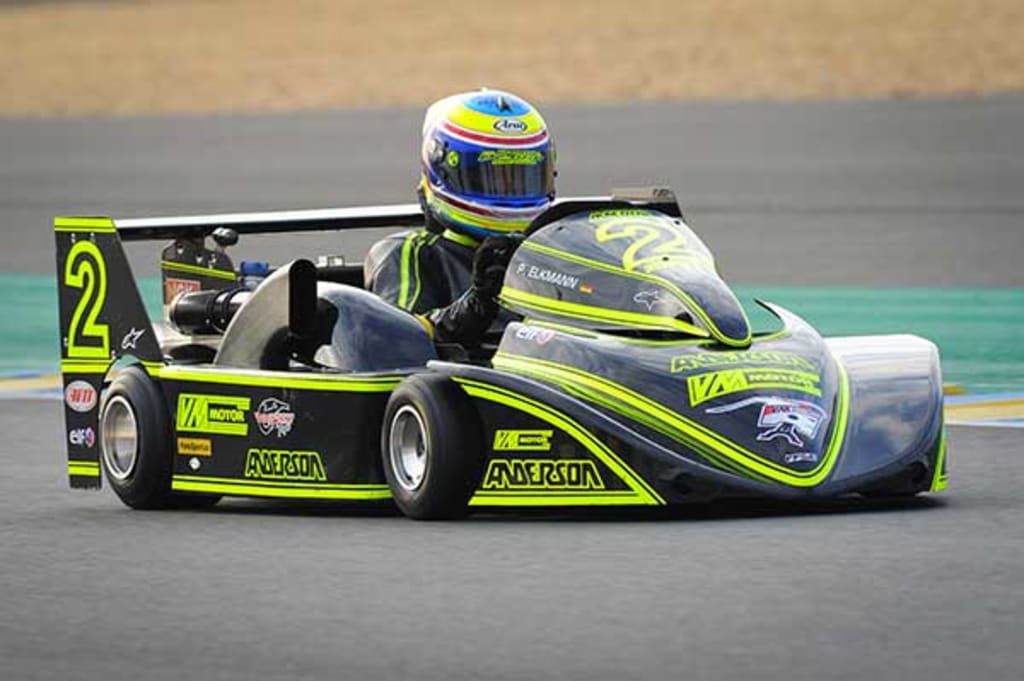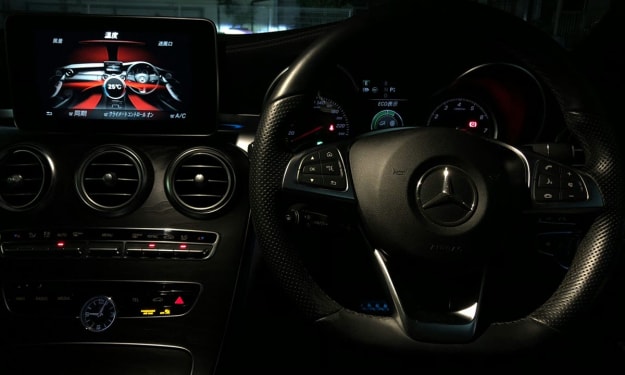Superkarts
What are they?

In 1956, Californian, Art Ingels fashioned a small kart out of tubes and a lawn mower engine. Subsequently, known as the father of go-karting, Ingels was a veteran hot rodder and race car builder.
Karting fever quickly spread throughout the U.S. and jumped the pond to Europe.
The first U.S. kart manufacturer was Go Kart Manufacturing, an American company, founded in 1958. McCullough was the first company to produce engines for karts. It's first engine was an adapted chainsaw 2-stroke engine. During the 1960's, motorcycle engines started to be adapted for kart use before dedicated manufacturers started building engines specifically for karts.
Kart racing, or karting, is a variant of an open-wheel motor sport with simple four-wheeled vehicles called karts or go-karts depending on their design.
Karting is often considered a low-cost and relatively safe way to introduce drivers to the higher ranks of motorsports. It can help a driver prepare for high speed wheel-to-wheel racing by helping to develop quick reflexes, precious control, and decision-making skills in a safer environment.
Often associated with a younger crowd, adults are also very active in karting.
Superkarts, are what their name implies, "super" "kart". The word Superkart traditionally means 250 cc engine karts, and are the fastest category in Kart racing racing on full size car circuits. 250 cc Superkarts often set faster lap times than more expensive and technically advanced racing machines.
Due to their small engines and compact size, both karts and Superkarts leave a much smaller environmental footprint than other categories of motorsport.
Superkarts can reach speeds exceeding 160 mph. It takes a little more than 3 seconds to go from 0 to 60 mph with a 125 cc shifter kart (6 gears), with a top speed of 115 mph on long circuits.
The major difference between a Superkart and karts are their fully aerodynamic bodykits. Their power unit can be specially designed kart engines or motorcycle engines with five or six-speed sequential gearboxes. Due to their high top speed and massive cornering ability, the bodywork on a Superkart front fairing, larger sidepods, and a rear wing. Tire size is five or six inches.
Superkarts race on what are called long circuits. In the UK, they also race on short circuits (under 1,500 meters). Some long circuits are Silverstone, Laguna Seca, and Magny-Cours.
Compared to other motorsports, racing Superkarts is inexpensive which makes them very popular. Entries of 60 Superkarts or more are common in a race. Most circuits allow for a large number of karts on the grids at once which can making watching Superkart racing extremely exciting and quite the spectacle. Overtaking tends to be easy, similar to motorbikes, and the races tend to be action-packed.
Race length tends to be about 20-25 miles.
Superkarts are raced worldwide, and are very popular in Europe.
Below is a brief overview of the British, Australian and U.S. Divisions and Classes.
British Superkart Divisions:
- Division 1 is open to 250 cc karts with one or two cylinders and five or six speed gearboxes. This is the fastest form of kart and was previously known as Formula E.
- Division 2 is for single cylinder karts with 5 and 6-speed boxes. These are lighter than the Division 1 karts and can be very quick on twisted circuits. This was previously nown as 250 International.
- 125 Open - Powered by 125 cc engines featuring 6-speed sequential gearboxes, this division uses a lighter chassis.
Australian Superkart Classes:
- 250 cc International - referred to as 250 twins, these Superkarts are powered by twin cylinder Grand Prix motorcycle engines. They have 6-speed sequential gearboxes.
- 250 cc National This is the single cylinder version of the 250 twins. They are powered by 250 cc motocross engines. They also have 6-speed sequential gearboxes.
- 125 cc Gearbox This class is powered by 125 cc Grand Prix motorcycle engines featuring 6 speed sequential gearboxes. This class uses a lighter and smaller chassis than the 250's.
United States Superkart Classes:
- 250 cc Formula/E or F/E This class features twin cylinder, 6-speed, liquid cooled Grand Prix motorcycle engines.
- 250 cc Inter-Continental E or IC/E This class features the single cylinder, 5 or 6-speed liquid cooled Grand Prix motorcycle engines.
When Art Ingels fashioned his first small kart out of tubes and a lawn mower engine in 1956, I am sure he never could have imagined how big a business this little invention would become. Now, a little more than 50 years later, we can thank Mr. Ingels for the sport and the excitement and fun his invention has brought to us. Thank you!
- Julie O'Hara 2023
Thank you for reading my poem or article. Please feel free to subscribe to see more content and if you are moved to, please consider tipping. In addition, my books can be found at https: Julie O'Hara Bookshop
About the Creator
Julie O'Hara - Author, Poet and Spiritual Warrior
Thank you for reading my work. Feel free to contact me with your thoughts or if you want to chat. [email protected]
Enjoyed the story? Support the Creator.
Subscribe for free to receive all their stories in your feed. You could also pledge your support or give them a one-off tip, letting them know you appreciate their work.






Comments
There are no comments for this story
Be the first to respond and start the conversation.